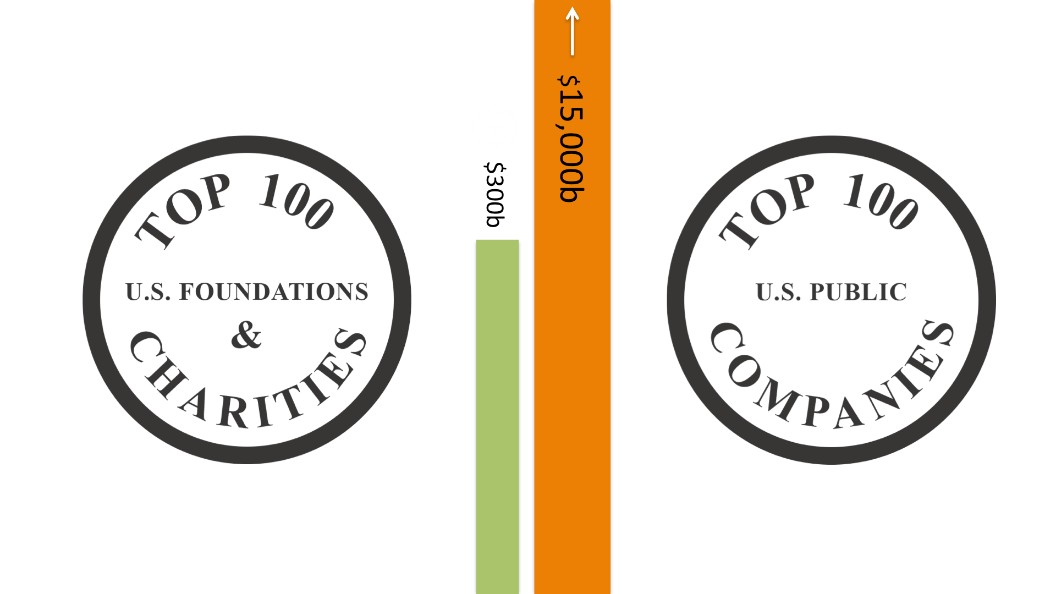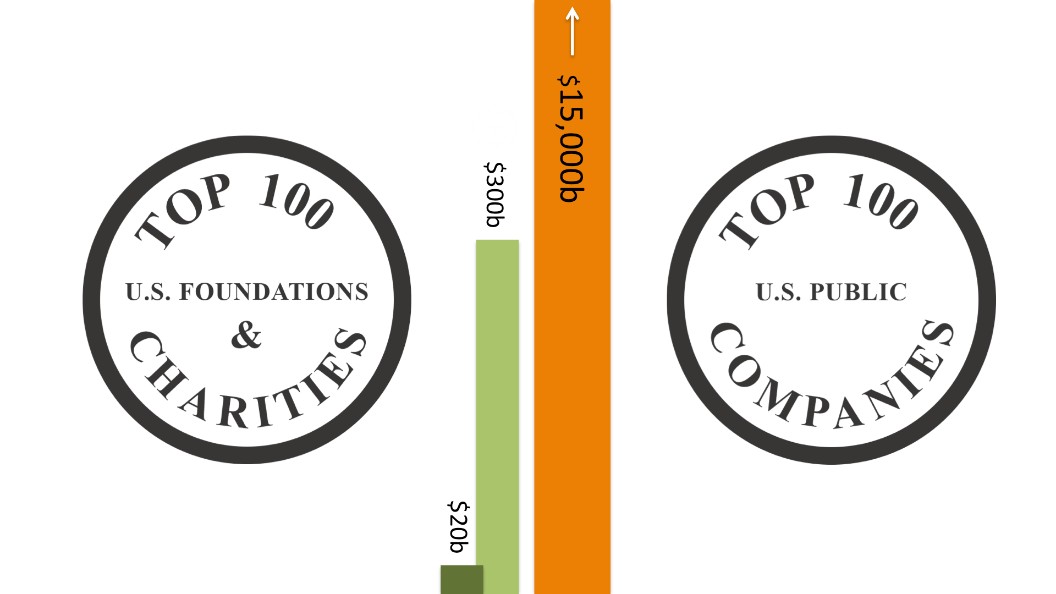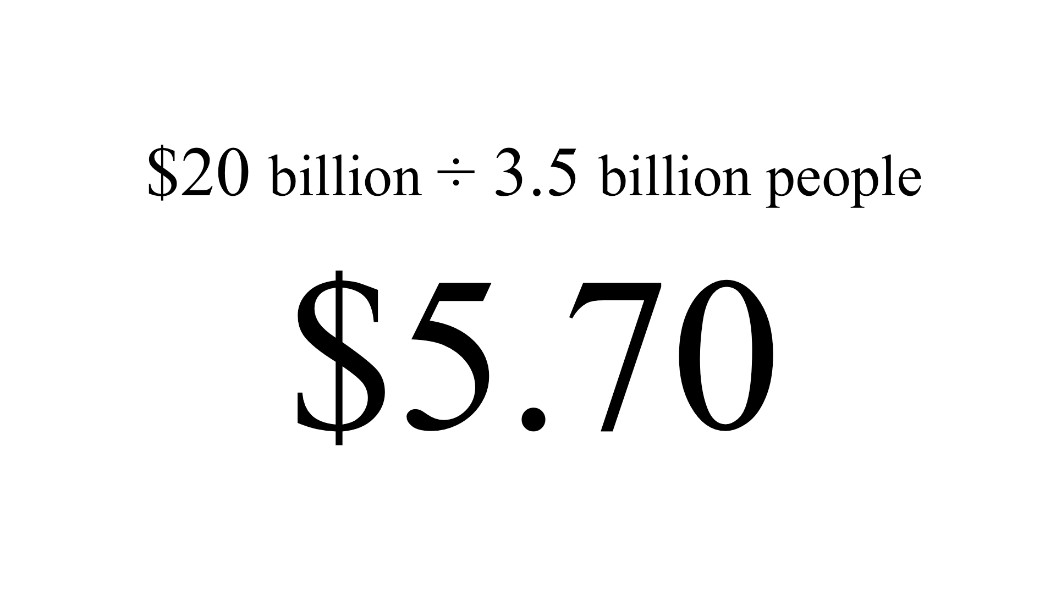
Many of us still think that social enterprise is synonymous with nonprofit, but that simply isn’t the case. There are many key differences between the two, and several myths still exist about the comparison between both. We asked one of the country’s leading experts on social enterprise, Luni Libes to share his thoughts on these myths. I know you’ll find this discussion compelling and informative. Social enterprise vs non-profit — let’s examine the myths that still exist.
Introduction by Amy Aitman, Change Creator Director of Content
1. The myth that social good is nonprofit social work.
Jump back 50 years, to the 1960’s before the Summer of Love, to a booming America, a western world emerging from the destruction of the first half of the 20th Century. A world with commonplace automobiles and air travel, where electricity water and phones were in most American homes, but where people’s grandparents could still tell stories of when those modern conveniences arrived.
This was the age of The Jetsons, when we were first promised flying cars, 4-hour work days, and push-button lives.
The Seattle World’s Fair of 1962 and New York World’s Fair of 1968 showcased this future.
Those fairs were specifically looking 50 years into the future. To the amazing future of the 2010’s. A time when all the world’s problems would be solved, and solved through advanced technologies.
Here we are in that future, and not all is well.
Half the world lives on less than $5 per day, and half of them at less than $2 per day.
A billion of those people don’t have enough food.
They are still dying from curable diseases.
They don’t have potable water, or running water for that matter.
They nearly all have phones, but no electricity to charge them, nor electricity to light their homes at night or to access the push-button lifestyle envisioned at those World Fairs.
Two things happened to get us here.
First, the population of the world doubled. There were just 3.2 billion people living on Earth in 1962, and 7.5 billion here in 2017. We did manage to go from 80% poverty to 50% poverty, but percentages don’t explain that we went from 2 billion poor to 3.5 billion poor.
Second and just as importantly, for the past fifty years we left it up to governments and nonprofits to solve the world’s problems. Neither of those sectors was given enough resources to succeed, and upon any success, neither have a model that scales to serve billions of people.
What we forgot over the last fifty years is that it wasn’t government or nonprofits that brought the first billion people out of poverty. It was business. Profit-seeking, for-profit, capitalism.
It was the Ford Motor Company and General Electric and U.S. Steel, along with a hundred other giant corporations and hundreds of thousands much smaller companies. It was the general store, issuing credit to the local townspeople. The garage inventor, making and selling a better plow or sewing machine or typewriter.
The For-Profit Cycle Creates a Middle Class
The for-profit cycle creates a middle class. A middle class then demands schools for their children. Roads. Police. Courts. Etc. And that middle class pays for that service themselves through taxes.
After 100 years, this cycle lets a company like Coca-Cola sell its sugar water in just about every village on the planet. But remember, it took 100 years for Coca-Cola to scale to that size. Coca-Cola was once a tiny startup with a single founder, serving one drink at a time in one shop in Atlanta, Georgia. And while that particular product may only bring smiles rather than good health, the same model of selling a product for a profit and using the profits to expand works for replacing three stone fires with efficient cookstoves, replacing kerosene lamps with solar power, for mechanizing farms, expanding distribution networks, and everything else needed to pull the last billions out of poverty.
This is the vision for the next fifty years. Mission-driven for-profits tackling poverty, hunger, and the other 15 UN Sustainable Development Goals. Companies that do good through business. Some which will scale up to the size of Coca-Cola, and millions more that are like that old general store, working solely in their local communities.
This is what social enterprise can and should be.
Related: How to Find Ideas for Your Social Enterprise That You’ll Want to Pursue
2. Examples of mission-driven for-profits
Mission-driven for-profit companies span every imaginable sector and geography. They range from breakthrough innovations, like recycling all cotton clothing, to providing basic necessities, like clean, flushable toilets in the slums of Kampala, Uganda.
What they all have in common is that they aim to make the world a truly better place, serving some social and/or environmental purpose, with that purpose embedded within their product or service. Or in other words, they are a business that does good in the course of doing its business.
I’ve had the pleasure of working with 82 such companies over the past six years. Let me tell you about just a few:
Evrnu: Technology that Recycles Cotton
The most impactful company I’ve seen so far is Evrnu. They invented a chemical technology that recycles cotton. Take old, used, worn-out cotton clothing, bedding, or towels, toss it in a vat, add Evrnu’s magic formula, and everything dissolves into a thick soup of fibers. Shoot the goo through a spinneret, and you have a fiber that is as good as the best cotton of the world. A fiber that can be spun into yarn, woven or knit into fabric, cut, sewn, and turned back into clothing, bedding, or towels. In other words, recycled. We expect this of paper, metals, and some plastics.
Now, for the first time in human history, we can do the same with clothing.
JOELEX: Making an Impact in Uganda
The company with the most obvious need is JOELEX, which builds and operates toilets in Kampala, Uganda.
There are three million people living in Kampala, two million in slums, in homes with no running water. Those two million people have access to just 1,000 flushable toilets. 1 toilet per 2,000 people. Or in reality just no toilets for most of the women and children, who spend most of their days in the slums.
Their solution is called open defecation. You’d recognize it as the same method Americans use with their dogs. Go on the edge of the path and put the poo into a plastic bag.
But unlike American dog walkers, there are no trash cans in Kampala and thus the bags are just tossed onto a far-away roof or behind the neighbor’s house. The obvious solution is toilets. JOELEX is doing just that.
Pay-per-use toilets, following in the footsteps of the public toilets which appeared in 1800’s London, when that city had millions of people, no toilets, and no sewers.
Arqlite: Tackling Plastic Waste
In between breakthrough and obvious ideas is Arqlite, which takes any and all plastic wastes and turns it into artificial rocks for use in and under concrete. There are 300 million tons of plastic waste generated each year, and just a small single digit percentage is recycled. A lot is collected for recycling, but the reality is that most ends up in landfills, incinerators, or the oceans.
Arqlite instead wants the 90%+ of unrecyclable waste turned into something of value, a product that replacing the quarry stone mined from the Earth and ground into the ubiquitous stone we see in concrete. Plus it turns out plastic makes for great concrete, lighter in weight and thus in need of less concrete in total, with better acoustic properties and better at holding in heat. A win-win for the environment.
How Africans Can Grow Chickens
Back to the developing world, in 2016 Bill Gates said that if he were poor, he’d grow chickens. African chicken had already thought that idea back in 2015, and started working with 64 women to grow chickens for them.
Turns out the two hurdles for poor people growing chickens is the cost of feeding the chickens for months before they are ready for market, then access to a big market to grow the chickens. The feeding and care is easy. African Chicken does the hard part for these women, providing baby chicks, feed, vaccines, and veterinarian care. All for free.
They then buy 90% of the chickens three months later, leaving 10% for the women to feed their family, plus $1 per chicken for the women for their labor. African Chicken processes the chickens, ships and sells the chickens in Dar es Salaam, the biggest city in the country, to hotels, restaurants and supermarkets who would never buy small quantities directly from the rural poor. After all the expenses, the company and the women each earn $1, and the city goers get a steady supply of high-quality chicken.
Coffee Can Lead to Change Too
Down in Nicaragua, the cash crop if coffee, not chickens. Trouble is twofold. One, coffee prices are highly volatile, and the small producers have to sell at the market price. Two, every few years some disease comes along, and the small producers can’t afford the fungicides and other treatments. Enter Jicote, which teaches those farmers how to keep bees, and which aggregates and exports the honey from those bees.
Honey is an another international commodity product, but one with a far steadier price than coffee. Plus bee keeping increases the yield of coffee plants, boosting that income stream too. Like chickens, the hurdles for small growers is access to markets, and Jicote plugs these farmers into a market they otherwise couldn’t reach themselves.
There are dozens more companies I could talk about, and you can watch each of them tell their stories in their own words at fledglings.fledge.co. For now I’ll leave you with one more.
Shift Labs: Social Good Health Solutions
Shift Labs makes a simple medical device that clips on to an IV bag. It’s an electronic device that counts the drips, telling the nurse how quickly the medicine from that bag is entering the patient. Anyone not trained as a doctor or nurse would expect such a device had been around as long as IV bags. You’d be wrong. The normal way this is measured is by looking at the drips, counting them by eye and estimating. Sometimes checking for a specific time against a watch. In a lot of countries checking against a certain number of pulses in the nurse’s pulse. Often just guessing.
For less than $100, Shift Labs’s Drip Assist gets ride of the inaccuracies and the guessing. The nurse can set audible alarms if the rate slows down or speed up too much (which is does when the patient moves her arm). This is a battery-operated device tried and tested in India, Kenya, and Nigeria, as well as deployed in emergency rooms and hospitals in the U.S., Europe, and Asia. It’s simple. It improves health. And while Shift Labs seems like a tiny version of Philips, it is a social enterprise, with a mission of improving lives of everyone on the planet, with by designing and selling devices affordable by clinics everywhere.
Related: How to Find Ideas for Your Social Enterprise That You’ll Want to Pursue
3. There simply isn’t enough money for nonprofits to scale.
In the modern world, we look to the nonprofit sector to solve the problems of poverty, hunger, education, etc. This is starting to change, with projects like the UN Sustainable Development Goals inviting businesses and “the private sector” to join in, but when most people look at those goals, they see a list of topics for the NGOs and governments to tackle.
We’ve left those topics up to government and nonprofits to solve for the last fifty years, and they’ve not done enough. More people are poor now than were living on the planet fifty years ago.
The reason why is rather simple. There isn’t enough money for governments and nonprofits to provide solutions. A bit of analysis can clearly show this truth.
Let’s start with two companies, both based in Seattle, both founded by college dropouts.
One not too long ago was the largest for-profit company in the world (now even larger in value but ranked third).
The other is the world’s largest nonprofit.

An Examination of Two Companies: Social Enterprise vs Non-Profit
Turns out they have the same founder, Bill Gates, Jr. The for-profit is Microsoft, and that fortune is the basis for the nonprofit, the Bill & Melinda Gates Foundation.
What makes the Bill & Melinda Gates Foundation the largest nonprofit is $40 billion in assets. It’s endowment.

That is a huge sum of money, larger in size to most of the GDPs of most countries in the world. That is $40 billion, billion with a “b”. But it’s not as big as Microsoft’s revenues. In 2016 Microsoft sold $93 billion worth of products to its customers.

That, however, is comparing apples with orangutans, as the $40 billion is all the money the foundation has versus the new cash that came to Microsoft in just one year. An apples to pears comparison would be the foundation endowment versus the market capitalization of Microsoft, i.e. the value of all of Microsoft’s shares. That was $460 billion back in 2016 (now over $600 billion at the end of 2017).

But wait, the foundation has only $40 billion. They don’t give all of that away each year. If they did that, they’d be out of the charity business next year. Instead, they give away just 5%. Or more specifically, they give about $2 billion from their endowment, plus another $2 billion that is gifted to them by Warren Buffet, founder of Berkshire Hathaway and good friend of Bill Gates.
$4 billion is again a lot of money. That is still billion with a “b”. But rather than plot out what would be a barely visible sliver of a bar, instead go back and look at the difference in scale between one entrepreneur’s nonprofit and for-profit efforts. $40 billion on the left and $460 billion on the right. A ratio of more than 10:1.
Is that a meaningful number? Is there 1/10th the capital in the nonprofit world vs. the for-profit world? No, not even close. To see the a more accurate ratio, let’s compare the top 100 charities with the top 100 public companies.

A Further Look at the Numbers
There are far more than 100 charities and far more than 100 public companies, but for both sectors the size of the entities drops off quickly, and in both cases it is easier to get data on the biggest entities. What we find is striking. The sum total of the assets (a.k.a. endowments) of the top 100 public charities is $300 billion.

$300 billion is a huge sum of money, but note that it is not even equal to one public company, Microsoft. Add up the value of the other 99 biggest public companies and the result is mind boggling. $15 trillion. That is trillion with a “t”, a.k.a. 1,000 billion or 1 million million.

For this comparison, the ratio of assets in the nonprofit sector to for-profit sector is 1:500. For every $1,000 of value in a for-profit, there is only $2 in a nonprofit. $100,000 of investment in a for-profit, $200 donation to a nonprofit.
But this too is misleading, as the 101st largest nonprofit has a value less than 1/500th the 101st largest for-profit. There are over 3,000 public companies in the U.S., most of which with a value larger than the 100th largest public charity.
It gets worse, remember how the Bill & Melinda Gates Foundation only gives away $4 billion per year. That is 1/5th of all the giving of the top 100 foundations. In 2016 the sum total of giving was just $20 billion.

If 100% of that $20 billion were spent on the 3.5 billion people who live on less than $5 per day (and it’s not), that would be just $5.70 per person per year.

$5.70 doesn’t put a child through school for a year. It doesn’t replace the three stone fire with an efficient cookstove. It could buy a few chickens and some feed, but wouldn’t be enough to deliver those chickens out to the billion households who would use them. It simply isn’t enough to make a dent in global poverty, world hunger, etc.
This is why nonprofits fail to solve these problems. They simply don’t have the money.
But what about governments?
They have trillions of dollars. Yes, they do, but they don’t spend it on these solutions. In the U.S., the total budget for non-military foreign aid in 2016 (before the Trump administration’s budget cuts) was $24 billion.

That more than doubles the charitable giving, but doesn’t increase it by a factor of 5 or 10 or 500. It changes the total potential per person from $5.70 to $12.57. Still not enough money to even reach all 3.5 billion people in need, let alone bring them anything that could help.
Which is fine, as the giving model doesn’t work. Giving fish doesn’t teach people to fish. It leaves them and their children depending on charity.
For comparison, let’s look at the 100 largest American advertisers. These are all for-profit companies. Tide, Clorox, Dove soap, Budweiser, Verizon, AT&T, T-Mobile, Disney, Comcast, Visa, etc. They spent $110 billion in 2016 wooing the 310 million Americans. Spending that money because it led to more than $110 billion in profits.

This number sinks in better when viewed side by side with the $44 billion from USAID and the charities. This $110 billion was just spent in the U.S., on television, web, radio, and print advertising. Selling products we already buy.
The conclusion when you look at these number is clear. The money and power is in the hands of the for-profits. Their efforts dwarf the foreign aid and charities.
If the UN Sustainable Development Goals are going to be reached, the only path to do that is through for-profit capitalism.
The Good News! There is Social Enterprise
The good news is that a new wave of companies is doing just that. It will take them decades until they are big, public, and global, but this seed change is happening. The pioneers of social enterprise, Ben & Jerry’s, Stonyfield Farms, Whole Foods made it big, got bought by multinational companies and their ideas are infecting their new owners. Plus thousands of other mission-driven for-profits are following that path, doing good in the world through business, scaling up to reach the last few billion who will rise out of poverty and join the middle class in the next few decades.
It’s not a matter of if, just when. It’s inevitable.
4. Social Entrepreneurship vs. The Myth of Tech
Another myth circulating around the world is that all startups are tech startups. When you talk to the people organizing entrepreneurship ecosystems around the world (and I’ve met dozens of these people as they visit Seattle seeking to replicate the success of my home city), first and foremost they all want to bring tech to their cities.
The reality is that only a tiny sliver of startups are the high-growth, disruptive tech startups that get so much press. All of venture capital in the United States funds less than half of one percent of the companies started each year in this country.
The other 99% of startups get less than 1% of the attention of the press and of investors, and yet it is those 99% of new companies that employs so much of Americans. I’d tell you how many of those are mission-driven companies, but I can’t, as no one is measuring that and thus no one knows.
In any case, given the focus on tech it is not surprising that the plethora of incubators and accelerators and business plan competitions and Angel groups and other entrepreneurship programming is primarily seeking the next Facebook, the next Google, and the next Amazon. If you are a social entrepreneur, it can be difficult to find any help using Google, Facebook or Amazon.
It is there, it’s just hard to find.
Find a Good Accelerator Program
One place to start is the brand new Accelerator Selection Tool, created by Conveners.org through their Accelerating the Accelerator program. The goal of that tool is to allow social entrepreneurs to find a list of training programs that fit their geography, sector, stage, and more. Almost 1,500 program are known by that tool today.
These programs range from nonprofit focused on a single sector (e.g. agriculture) in a specific region of a specific country (e.g. northern Uganda) to global for-profit accelerators like mine (Fledge), which works with companies from all sorts of sectors based in any country of the world. The programs vary from 1 day to 1 year in length. Some fly you to gather with others in some city of the world. Others come to you over the internet.
Other places for finding like-minded entrepreneurs and investors are the big events like SOCAP, the world’s largest social capital conference, held annually in San Francisco. The SANKALP Forum, with annual gatherings in Mumbai, Nairobi, Jakarta, and the Hague. Foro Latinoamericano de Inversión de Impacto (FLII), annually in Merida, Mexico, and the largest of these events in Latin America.
Websites like ImpactSpace have listings of social enterprises and impact investors. Impact Base has listings of impact funds.
Organizations like the Global Impact Investors Network (GIIN) and B Lab create and publish systems for measuring impact in an organization.
Then when it comes time for funding, groups like Investors’ Circle, Toniic, and investorflow.org share investment opportunities with their investor-only members.
And when all of those sources tell you are just too early, there is free entrepreneurship education and advice on my website, lunarmobiscuit.com.
It turns out that there is a lot of help for social entrepreneurs, it’s just not easy to find, hiding amongst the noise of the tech-focused startup landscape.
You might also be interested in ready the article entitled, The Role of Empathy in Social Enterprise.






